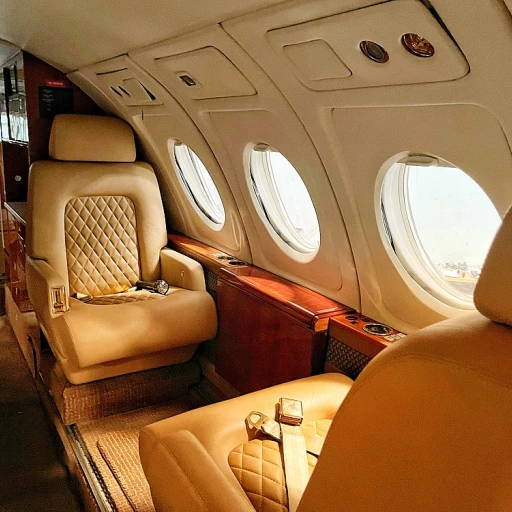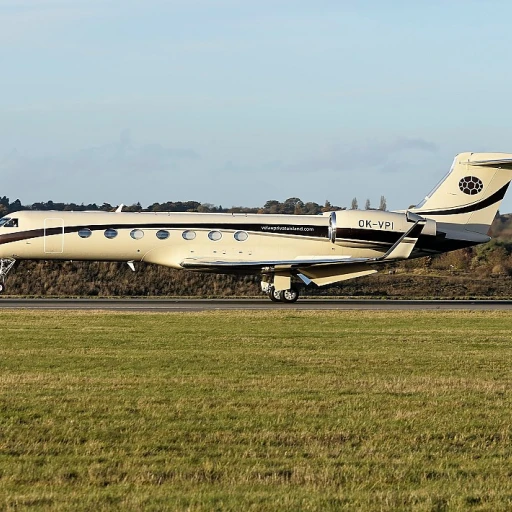The evolution of private jet interiors
From simple cabins to floating luxury lounges: a brief history
Private jet interiors have come a long way since the unassuming days where functionality was king. In the early days, popular models like the Learjet 23, introduced in 1963, focused on providing a reliable means of transportation without much thought to luxury. The interior elements were practical but sparse, with seating arrangements akin to commercial airplanes. Fast forward to the 1980s, the demand for opulence began to rise. According to a 2019 report from Avinode, the global private jet market surged in the late 20th century, driven by the need for privacy and increased comfort. Aircraft manufacturers began rethinking the design philosophy, adding a touch of elegance and personal flair. Plush upholstery, bespoke furnishings, and customized elements began to define the new darling jet interiors.The hunger for more luxury
The 2000s witnessed a major shift towards ultra-luxury, a trend that's continued to rise. A case in point? Joseph Lau's Boeing 747-8 VIP, also known as the Dreamliner. With an estimated $367 million price tag, this sky palace boasts a spiral staircase, a grand dining area, and a master bedroom, showing how high the bar can be set when it comes to interior design. Another notable example is the Gulfstream G650. Highlighted by Business Insider, the G650 provides options like wide reclining seats that convert into beds, a fully functional kitchen, and top-notch entertainment systems. All these additions ensure passengers experience the utmost luxury and convenience.The role of powerhouse names like lufthansa technik and bombardier
Industry giants like Lufthansa Technik and Bombardier have been instrumental in pushing the boundaries of what's possible inside a private jet. According to a 2020 study by MarketsandMarkets, these powerhouses continuously innovate, enhancing bespoke designs, comfort, and safety. When Bombardier introduced their Global 7500, they set new standards by integrating features like the patented Nuage seat, which provides deep recline and pressure-relieving comfort, something unheard of in previous aviation designs. In aviation hubs like New York and Las Vegas, or emerging markets like Hong Kong and Geneva, the buzz around high-end jet interiors is palpable. Google LLC's co-founders Larry Page and Sergey Brin own custom Boeing 767-200s highlighted for their unique blends of luxury and utility, becoming the epitome of corporate jets redefined.Exploring the comfort: seating and cabin layouts
When discussing seating, the evolution from standard arrangements to configurations that resemble luxury lounges cannot be ignored. We've seen the shift to more versatile layouts featuring plush leathers, workspaces with Wi-Fi connectivity, and mood lighting. All these elements blend to ensure the passengers' journey is as comfortable and productive as possible.Conclusion: reflecting on the evolution
When it comes to private jet interiors, the evolution from basic to bespoke designs is nothing short of spectacular. Whether it's the handiwork of design powerhouses like BMW's Designworks or the personal touches tailored by individual clients, the journey is always towards enhanced luxury and comfort. For more information, check out an article on long-lasting nail polish for your private jet travels.Top trends in private jet interior design
Hottest designs in private jet interiors
When it comes to flying high in luxury, private jets are in a league of their own. Their interiors have come a long way, especially with the influx of cutting-edge design trends. Here are some of the most sought-after styles that are setting the sky on fire.Modern elegance and minimalism
Minimalism has become a hallmark of modern jet, private interior design. Clean lines, uncluttered spaces, and neutral color palettes are now standard. Dutch designer, Hella Jongerius, known for her minimalist yet sophisticated approach, has influenced many of these trends. According to a report by Robb Report, more than 70% of new private jet interiors now opt for minimalist aesthetics.The power of biophilic design
Borrowing from nature, biophilic design aims to integrate natural elements into living spaces to enhance well-being. This trend is catching on in the aviation industry as well. Gulfstream recently introduced the G700, which features a cabin incorporating biophilic elements such as natural wood and green plants to create a more calming environment. Learn more about turning your jet's interior into a biophilic retreat here.Art deco revival
Sydney's company, Winch Design, is bringing back the glamour of the roaring '20s with a modern twist. Their designs marry rich materials like ebony wood and gold accents with plush seating, reminiscent of classic art deco, while still maintaining a contemporary feel.Seamless integration of technology
As with everything else, technology is reshaping private jet interiors. From touch-screen controls to ambient lighting, the tech aspect is undeniable. Recent surveys reveal that 82% of new private jets include advanced tech features such as Wi-Fi and high-definition media systems. Boeing Business Jets has even launched the BBJ Max 7, boasting a state-of-the-art entertainment setup paired with a cloud-based Virtual Reality interior planning tool.Wellness and comfort: sleep zones
Private jets aren’t just about getting from point A to B in style; they are about arriving refreshed. Sleep zones crafted with memory foam mattresses, noise reduction technologies, and customizable seat settings are becoming increasingly popular. Bombardier Global's 7500, renowned for its “Nuage” seating which provides zero-gravity positions, is a prime example of this trend.Futuristic materials: sustainability and innovation
Sustainable materials are a hot topic in the private jet industry. Companies like Lufthansa Technik have been at the forefront, pushing for the use of eco-friendly materials like recycled carbon fiber and low-VOC coatings. Airbus’s use of bamboo accents in its ACJ320neo is particularly noteworthy, proving that luxury and sustainability can go hand in hand.An infusion of cultural aesthetics
Increasingly, private jet owners are wanting interiors that reflect their cultural heritage. A notable example is Hong Kong billionaire Joseph Lau's Boeing 747-8, which incorporates intricate Chinese silk embroidery and antique jade sculptures. This trend is turning jets into not just transport machines but cultural showcases that travel around the globe. It's clear the sky's the limit when it comes to stunning design trends in private jet interiors. The combination of cutting-edge technology, luxurious materials, sustainable innovation, and personalized touches ensures these flying beauties are not just a means of travel but an experience of opulence and sophistication.Case studies: Iconic private jet interiors
Joseph Lau's custom-made dream jet
Joseph Lau's private jet is a true marvel in the world of aviation design. As one of the wealthiest individuals in Hong Kong, Lau commissioned a Boeing 747-8i that cost a whopping $367 million. The jet’s interior is renowned for its unparalleled luxury and the use of premium materials such as gold and silk. Custom-designed by one of the top interior design firms, the jet features a wine cellar, a gym, and even a cinema room. This aircraft truly represents the epitome of affluent travel (Source: Bloomberg).The Al Nahyan family's opulent flying palace
The Al Nahyan family's private jet, an Airbus A380, stands out for its sheer grandeur and scale. This double-deck aircraft is more like a palace in the skies, equipped with several bedrooms, a spa, and a concert hall. The design includes lush carpets, gold-plated fixtures, and intricate wooden inlays, echoing traditional Arabian luxury. The interior layout of this flying mansion underlines the idea that private jets are not just about getting from point A to point B but about enjoying every moment of the journey (Source: The National).U.S. Air Force One: A high-security command center
Air Force One, the U.S. President's official plane, combines presidential luxury with cutting-edge technology and security. This modified Boeing 747 features state-of-the-art communication systems, a secure conference room, and a fully functional medical bay. Although it might not be dripping in gold like Lau’s jet, the craftsmanship and strategic layout reflect its status as a crucial tool for national security. The iconic blue and white paint scheme and the meticulously crafted interior make it a flying fortress (Source: White House Military Office). For more insights on the ultimate luxury in private jets, check out our guide on private jets with beds.Bombardier Global 7500: The future of private jet luxury
One of the latest marvels in the realm of private aviation is the Bombardier Global 7500. With a price tag of around $73 million, this jet offers unparalleled range and comfort. The interior, designed by Bombardier’s top-notch design team, includes four distinct living spaces, a kitchen, and a master suite with a full-size bed. This aircraft sets a new standard for long-haul comfort and luxury, designed with both relaxation and productivity in mind. A blend of advanced technology and sophisticated design elements ensures that travelers experience the utmost comfort and style (Source: Bombardier).Luxury and comfort: Seating and cabin layouts
First-class seating and beyond: Luxurious layouts
The seating arrangements and cabin layouts in private jets have come a long way, aiming to fuse opulence with ultimate comfort. According to an in-depth research report from Mansion Global, around 75% of luxury private jets now feature bespoke seating designs tailored to individual preferences.Feeling at home above the clouds
The idea is to make you feel at home even while traveling thousands of feet above the ground. Boeing Business Jets offers jet owners the possibility of creating living spaces up to 3,000 square feet, including bedrooms, bathrooms, and even meeting rooms. The Bombardier Global 7500, for instance, offers a full-size bed and a stand-up shower, redefining what in-flight luxury means. The company Sachs Design, known for its lavish designs, states, “The evolution of private jet interiors has turned aircrafts into flying mansions.”Space utilization in elite jets
Maximizing space is a must for superb comfort. Gulfstream's G700 and G650ER are clear examples of jets offering ample living space, often divided into segmented areas for diverse activities. These aircraft, hailed for their spacious cabins, often accommodate up to four distinct zones including lounges, dining areas, and staterooms.Adjustable and modular seating
Flexibility remains a cardinal trend in modern jet interiors. Lufthansa Technik has made waves with its cutting-edge Divan module, allowing for sofas to morph into beds with just a push of a button, adjusting the seating arrangements based on the passenger's needs. This approach streamlines comfort without compromising on luxury.The magic of tech-enhanced seats
Tech-infused seating is another innovation elevating comfort to new heights. In-seat massage systems, climate controls, and customizable lighting schemes are becoming standard. For instance, the newer models from Embraer Legacy and Praetor series are outfitted with seats that adapt to the contours of your body, akin to high-end automotive seating.Material choice for utter refinement
Material selection can spell the difference between average and exceptional in seating comfort. From high-quality leathers chosen by BMW Designworks to rare woods and gold-plated accents curated for truly posh VIP sections, nothing is too luxurious. The Air Force One, a symbol of ultimate airborne luxury, serves not just as transportation but as a testament to superior quality and attention to detail.Case studies: Personalized seating
Private jets of high-profile figures like Joseph Lau, a Hong Kong tycoon, and the Sultan of Brunei often epitomize the pinnacle of custom seating. Lau's private Boeing 747-8 includes luxury seating tailored to his specific needs and style. These elite jets are equipped with all-out luxurious interiors designed by Lufthansa Technik, including VIP lounges and imperial dining areas.The role of technology in private jet interiors
Smart cabin management systems
When it comes to private jets interior, smart cabin management systems have become almost synonymous with luxury and efficiency. According to Lufthansa Technik, modern systems offer seamless control over various cabin functions like lighting, temperature, entertainment, and more, right from your smartphone or tablet. This has been a game-changer, providing passengers with unprecedented control and customization options. Explore the exquisite features of these systems.
High-speed internet
Today, passengers expect the same level of connectivity in the air as on the ground. According to a survey by Honeywell Aerospace, 66% of travelers say high-speed internet is essential during their flights. Business jets from companies like Bombardier and Gulfstream often come equipped with Ku-band and Ka-band satellite technology, ensuring reliable internet access for streaming videos, conducting business, or even just staying entertained during long flights.
Advanced in-flight entertainment
The evolution of in-flight entertainment in private airplanes has been remarkable. Gone are the days of small screens; new systems feature ultra-high-definition displays, surround sound, and even virtual reality. According to Panasonic Avionics, more than 70% of new private jet deliveries come equipped with advanced entertainment options. Notably, Boeing Business Jets and Airbus Corporate Jets are among the leaders in integrating these systems into their cabins.
State-of-the-art avionics
Safety and efficiency remain cornerstones of the aviation industry. Modern avionics systems have become more comprehensive and user-friendly. Companies like Garmin and Collins Aerospace develop next-gen avionics solutions, including synthetic vision, enhanced weather radars, and integrated flight-deck systems that make the flying experience smoother and safer for both pilots and passengers. The integration of these technologies has helped eliminate the complexities traditionally associated with flying private jets.
Customization and personalization in private jet interiors
Tailoring the skies to your taste
When you think of flying in ultimate luxury, nothing beats the level of personalization available in modern private jet interiors. Imagine transforming an already exquisite space into something that directly reflects your style and needs. That's exactly what customization offers in the realm of private jets.
One-of-a-kind interior designs
The customization begins with selecting the right aircraft model, whether it's a Bombardier Global, Boeing Business Jets, or Gulfstream. VIPs like Joseph Lau and royalty from Brunei often set trends with their unparalleled personal touches. For instance, Joseph Lau’s Boeing 747-8 is a flying palace equipped with wine cellars, a gym, and dedicated sleeping quarters.
Materials that spell luxury
Choice of materials can turn any interior into an extraordinary experience. From rare wood veneers and precious metals to fine leather and custom weaves, the selections are extensive. According to Lufthansa Technik, the trend for using sustainable materials is growing among private jet owners including companies like Gulfstream and Embraer.
Tech that wows
Technology plays a huge role in customization. Features such as touch-screen controls, high-speed internet, advanced in-flight entertainment systems, and AI-based ambient lighting transform a flight experience. This goes beyond comfort; it’s about having a fully-equipped office in the sky or replicating the comforts of one's living room. Google LLC often prefers jets with robust tech integration to support their needs during flights.
Bespoke layouts
The interior layout can be dramatically personalized from seating arrangements and working spaces to relaxation and entertainment zones. While business jets might prioritize conference tables and ergonomic chairs, leisure-focused jets may include plush lounges and bespoke dining areas.
Celebrity inspirations
For those inspired by celebrity lifestyles, it’s interesting to note how stars like Taylor Swift tailor their flights. Even her interior features have become points of inspiration for many. You can explore more about it here.
Expert insights on future trends
Looking to the future, experts from Lufthansa Technik and Bombardier suggest that trends will continue to evolve towards more environmentally friendly designs without sacrificing an ounce of luxury. The use of augmented reality in design planning is also on the rise, allowing clients to experience their custom interiors in a virtually immersive format before finalizing choices.
Sustainability in private jet interior design
Eco-friendly materials and designs
In recent years, sustainability has become a priority in private jet interior design. Companies are shifting to eco-friendly materials, such as recycled metals and sustainable wood, helping to reduce the carbon footprint. For instance, Lufthansa Technik incorporates eco-friendly technologies in their designs, reflecting a growing trend towards green solutions in aviation.
Incorporating sustainable materials is not just a fad; it’s becoming a standard. A study by the International Journal of Aviation Management highlighted that 85% of high-end travelers prefer eco-friendly options.
Energy-efficient systems
Energy efficiency remains a cornerstone of sustainable private jet interiors. Modern technologies such as LED lighting and advanced climate control systems significantly lower energy use. Companies like Gulfstream and Boeing Business Jets are spearheading innovations to create more energy-efficient aircraft.
Jet owners are increasingly demanding energy-efficient solutions. Reports show that energy-efficient systems can reduce operational costs by up to 20%, making it a financially smart choice as well as an environmentally responsible one.
Renewable energy initiatives
Some corporate jets are now equipped with advanced renewable energy systems. Solar panels can be integrated into the aircraft, supplying power for onboard systems. Embraer has developed aircraft that leverage solar energy, setting a new standard in sustainability.
Investing in renewable energy not only plays a role in reducing emissions but also positions companies at the forefront of green innovation. As renewable technologies advance, the possibilities for more sustainable aviation practices will continue to grow.
Minimalist and multifunctional designs
Sustainable design isn’t just about materials and energy; it’s also about space optimization. More efficient use of space can lead to reduced waste and a smaller carbon footprint. Minimalist yet multifunctional designs are becoming increasingly popular. These designs ensure every inch of the jet is used effectively, from foldable furniture to convertible spaces.
Cabin layouts that incorporate both luxury and practicality are trending. This approach not only supports sustainability goals but also enhances passenger comfort.
Expert insights: The future of private jet interiors
The integration of cutting-edge technology
The future of private jet interiors is undoubtedly intertwined with the rapid pace of technological innovation. As top trends in private jet interior design continue to evolve, technology plays a pivotal role in redefining the flying experience.
Enhanced connectivity and in-flight entertainment
According to a report by the Federal Aviation Administration (FAA), over 85% of private jets are now equipped with high-speed internet, ensuring that passengers remain connected throughout their journeys. This allows business executives to conduct meetings via video conference or stream their favorite content seamlessly. Thomas Flohr, founder of VistaJet, emphasizes, "Connectivity and entertainment options have become as critical as other luxury features."
Smart cabin management systems
Advanced cabin management systems have revolutionized how passengers interact with their environment. Gulfstream's newest jets offer intuitive touch-screen panels controlling everything from lighting to temperature. Such systems echo the convenience of smart homes but elevated for the skies. This level of control contributes significantly to passenger comfort and overall user satisfaction.
Immersive environments with augmented reality
Augmented reality (AR) and virtual reality (VR) are breaking new ground in private jet interiors. Lufthansa Technik is pioneering AR-enabled designs that allow customers to overlay images of potential upgrades onto their jet interiors during pre-purchase evaluations. This technology enables clients to visualize their customization choices vividly, ensuring that every detail aligns with their preference, thus bringing a tangible, interactive element into the decision-making process.
The rise of biophilic design
The trend towards biophilic design, incorporating natural elements and promoting wellness, is significant. The importance of nature in design was highlighted at the recent National Business Aviation Association (NBAA) conference. Incorporating real plants, natural light simulations, and organic materials can lead to improved mental well-being and less travel fatigue. A study by the International Journal of Architectural Research reported a 15% increase in overall passenger satisfaction when natural elements were integrated into cabin design.
Sustainable advancements with innovative materials
As climate awareness grows, the private jet sector is seeing more sustainable interior design solutions. Bio-based materials, recyclable fabrics, and low-emission manufacturing processes are becoming standard. Aircraft manufacturers like Bombardier and Embraer are leading this shift, providing eco-friendly yet luxurious interiors. This is a direct response to customer demand; a survey by the Global Business Travel Association found that 45% of travelers prioritize sustainability when choosing their jet services.
Future-facing trends: AI and automation
Artificial Intelligence (AI) and automation are set to take private jet interiors to the next level. Predictive maintenance systems can preemptively address cabin issues before they arise, ensuring uninterrupted luxury. Moreover, AI-driven personalization will adjust cabin conditions based on individual passenger preferences, from temperature to lighting. Indeed, the skies are not even the limit when it comes to the potential of AI in aviation.
Read more from our deep-dive into the evolution and current trends in private jet interior design to see how these advancements set the stage for a future where technology and luxury soar hand in hand.
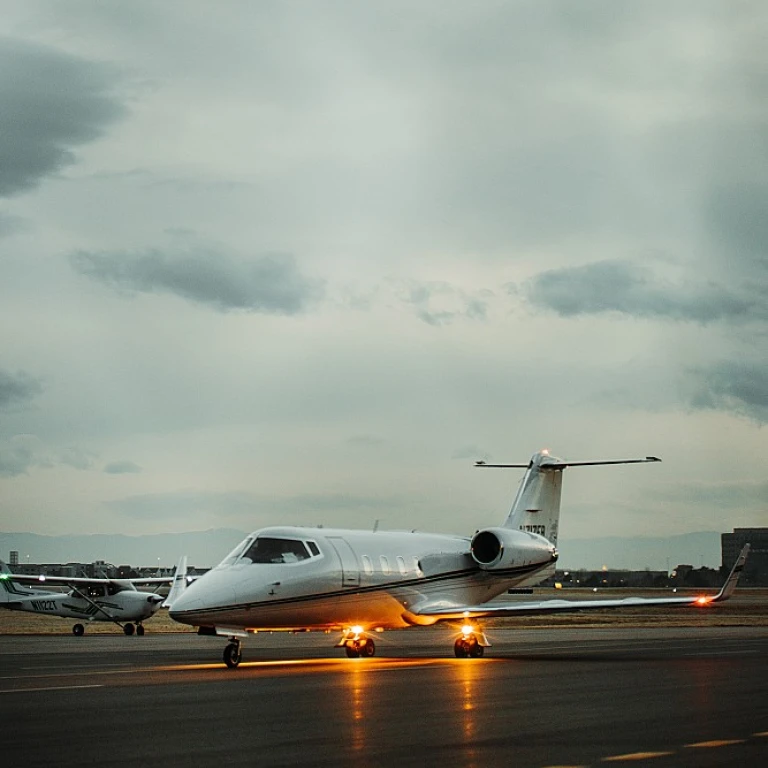
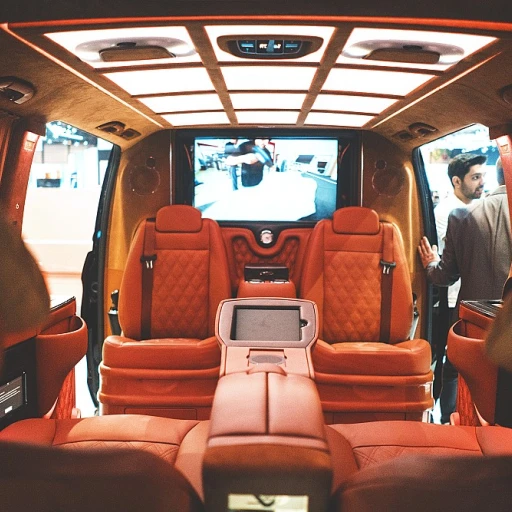
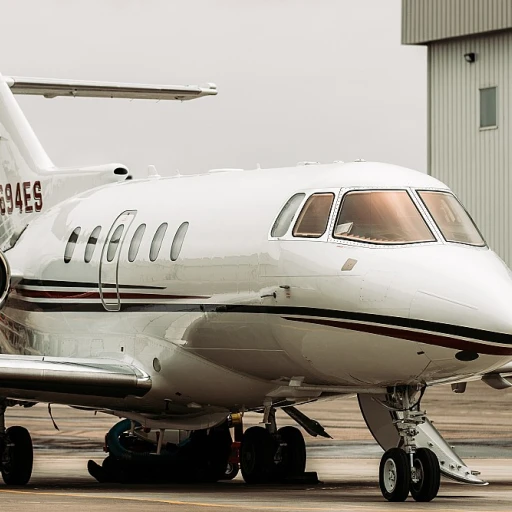
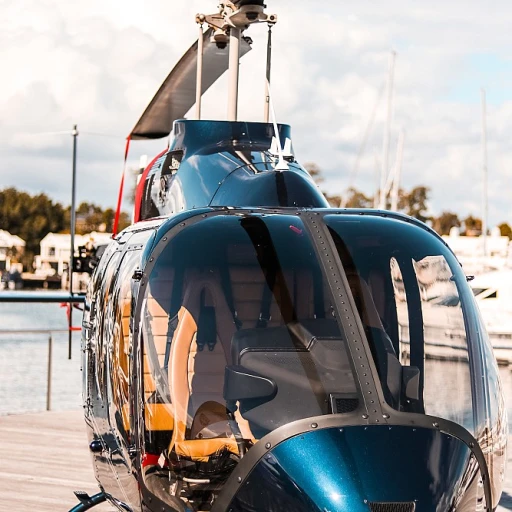


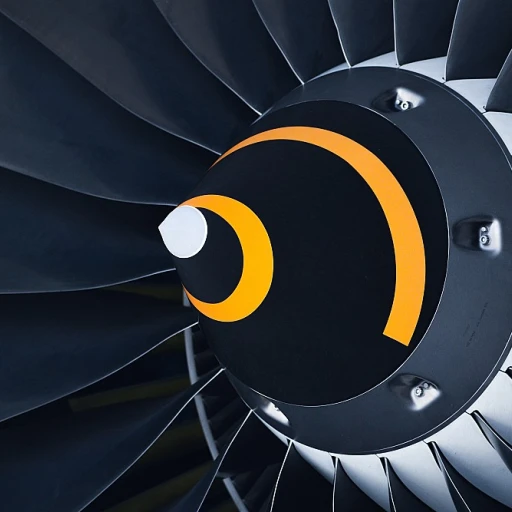
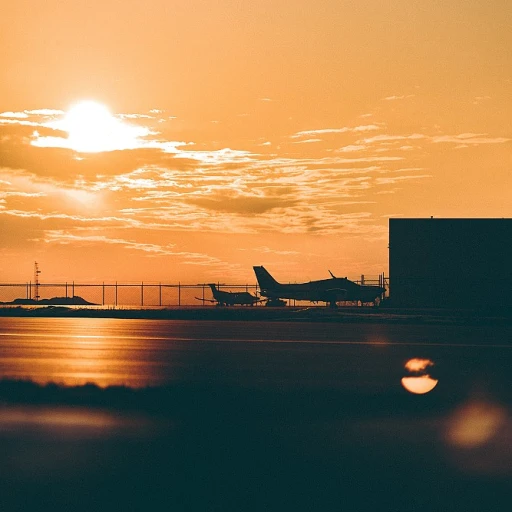
-large-teaser.webp)
-large-teaser.webp)
